Albitsia and its cultivation
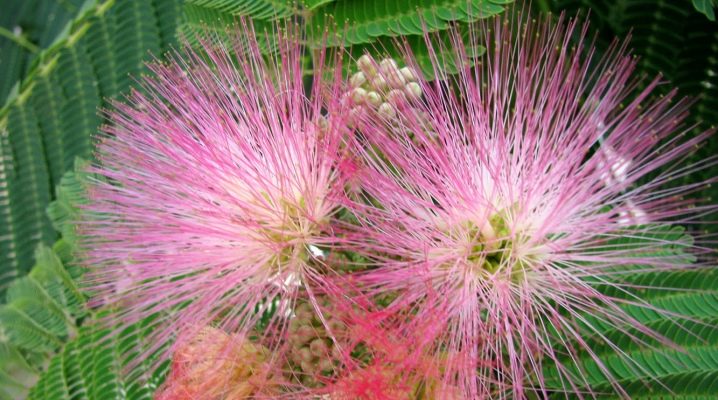
Albizia is a tropical representative of deciduous acacias from southern regions such as Hindustan, Africa, Thailand, Australia, Iran, Turkey, and southern China. The plant belongs to the subfamily of mimosa, which includes deciduous trees and shrubs.
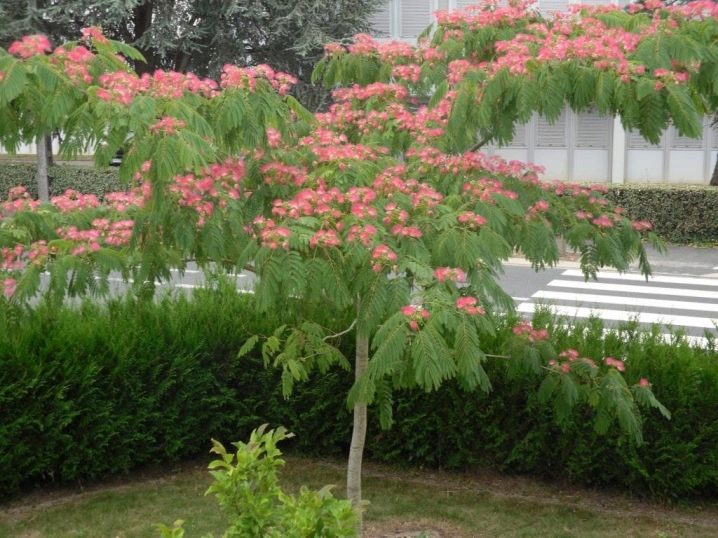
Description
Albizia is loved by the owners of winter gardens, greenhouses; it is grown outdoors in areas where winters are quite mild and warm. The culture grows well at home, which allows it to be cultivated in colder regions, because the openwork leaves and amazing flowers have made the plant very popular. In nature, albicia looks like a tree with a dense and wide crown up to 7 meters in volume, or a powerful shrub with a height of 6 to 10 m. Treelike varieties have a well-branched root system, but its superficial location dramatically reduces winter hardiness.
The plant needs a shelter in temperate latitudes.
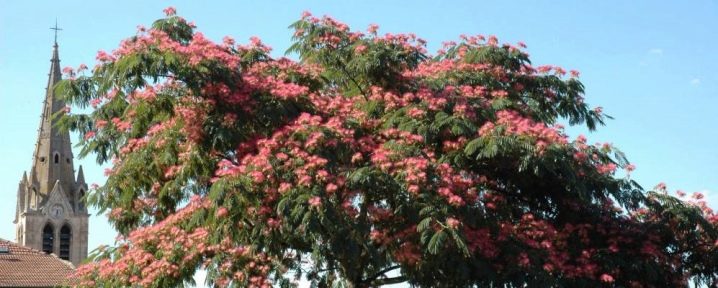
At home, the culture is much more modest - from 25-30 cm, if grown using bonsai technology. With standard cultivation in an ordinary apartment, its height does not exceed 1.5 m, but in a living room with a second light, it can grow up to three meters. The straight trunk is covered with dark gray bark with a finely scaly surface. A complex leaf of dark green or bluish-purple shades reaches 20 cm in length and consists of 15-30 pairs of opposite small leaves. A characteristic feature of the albition foliage: at night it folds and takes on a drooping appearance, in the morning it opens up and cheerfully reaches for the sun's rays.
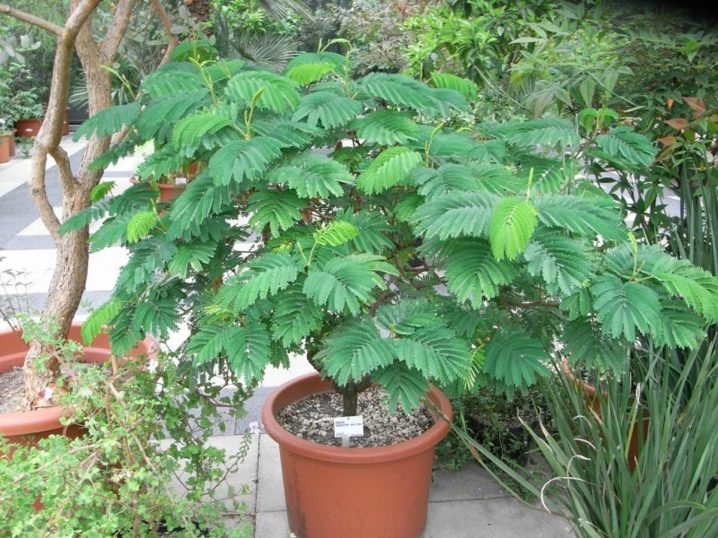
As for paniculate inflorescences of pink or cream shades, bunches of the longest stamens of lilac tones, protruding far beyond the five-petal corolla, give them an amazing decorative effect. In addition, the bisexual flowers have a sweet aroma, which makes acacia a strong honey plant during the flowering season. Fallen inflorescences give life to fruits with seeds inside. Elongated (12-18 cm) pods are covered with a greenish-brown skin and contain flattened pod seeds that reach 1 cm in length. Acacia grows well only in bright, but diffused lighting - direct sunlight should fall on the crown only for a limited time. Lack of light negatively affects the overall development of culture.
During winter, the houseplant needs rest and should be kept in a cool room with a temperature range of 5 to 10ºC. During the growing season, a comfortable temperature is considered to be 20-25ºC.
In summer, acacia thrives outdoors in the shade of large trees or on the southeast, southwest side.
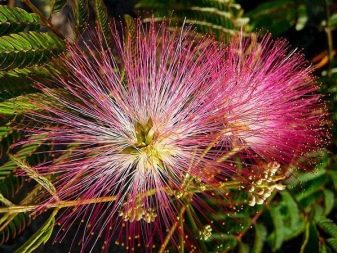
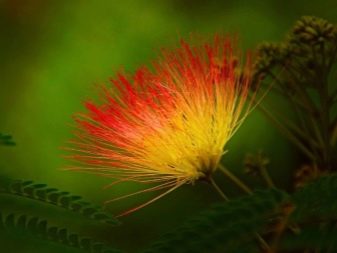
Types and varieties
Albizia, or Constantinople acacia, is very popular in landscape design, because it has high decorative properties all year round, even in winter, devoid of foliage.
-
Albizia Lankaran Pompadour (Albizia julibrissin Pompadour). Fluffy inflorescences gave rise to the name of the plant silk acacia. The spreading crown of a powerful tree with a height of 7 to 10 meters is covered with matte openwork feathery foliage of bright green color. The reverse side of the sheet plate is painted in lighter colors. There are varieties with lilac or purple foliage. Inflorescences are large (up to 12 cm in diameter), fragrant, with a thick bunch of long stamens of light red, pink, creamy palette.Lankaran acacia blooms in June-July, in ideal climatic conditions - until September. Indoors, it is grown as a bonsai or a short tree.
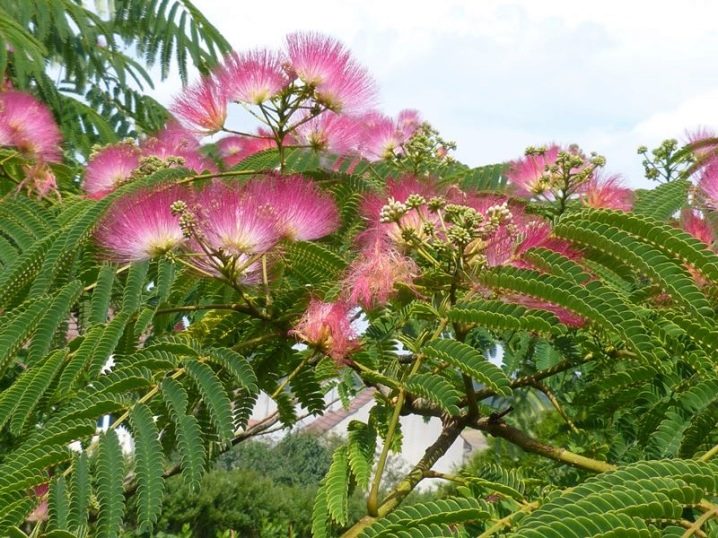
- Bundle-flowered albition (Albizia lophantha). This native of Australia has a more compact size (up to 4 m in height) than the previous species, and smaller foliage. Spike-shaped inflorescences do not exceed 8 centimeters, have a sweetish aroma, creamy yellow or bright yellow stamens. The beginning of flowering - April-May, duration - 3-4 months.
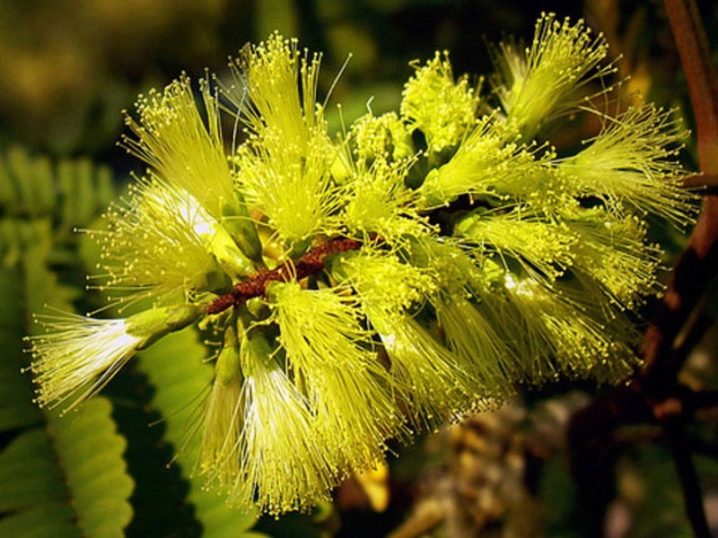
- Amara (Albizia amara). Shrub acacia with a height of 4 to 5 meters, has many shoots and a large habit. The leaves are openwork, long paniculate stamens are colored in orange tones, the diameter of a medium-sized inflorescence is 3-5 cm. A strong sweet aroma makes the variety extremely attractive to bees and bumblebees.

- Saman (Albizia saman). It is a large and voluminous tree with a height of up to 20 meters and a powerful spreading umbrella-shaped crown. At the same time, the plant is characterized by rather fragile branches, prone to breaking off with strong gusts of wind. Bright green leaves, unlike other species, have a wider plate. Inflorescences with a violet scent are painted in dark pink or red tones.
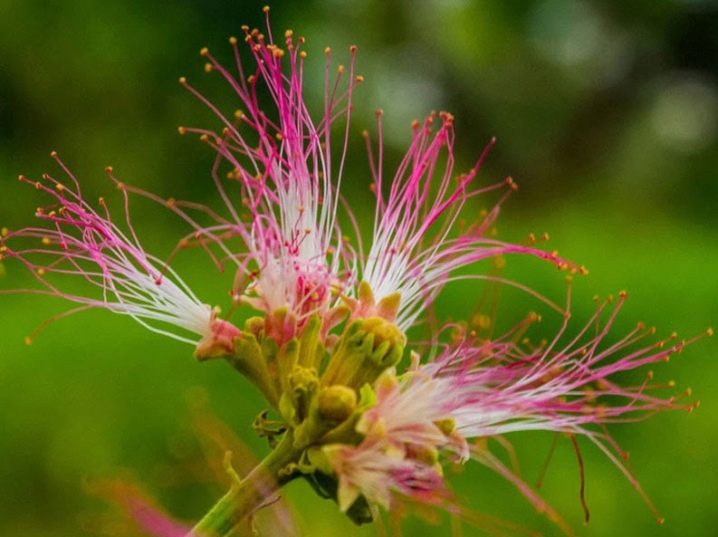
- Sickle (Albizia falcataria moluccana). Its main difference is super-fast growth for tree-like plants, the crescent albition grows by 3 cm per day.Its homeland is Indonesia, where it is grown on an industrial scale for the sake of soft wood, whose properties are in demand in the manufacture of various souvenirs.
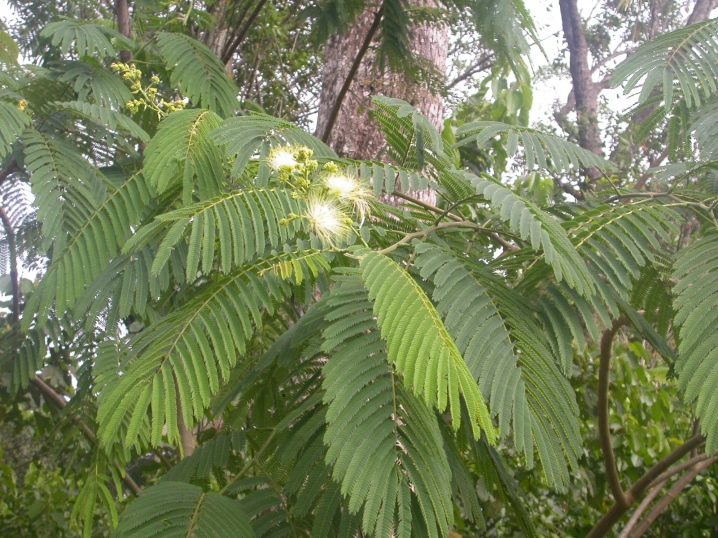
- Lebbeck (Albizia lebbeck). The difference between this species is the record height for acacia. Adult specimens even exceed adobe, that is, they grow over 20 meters. The homeland of the variety is India, Burma (modern Myanmar), Andaman Islands. The indigenous population of the islands calls the culture shirisha, uses it in folk medicine and for aromatherapy.
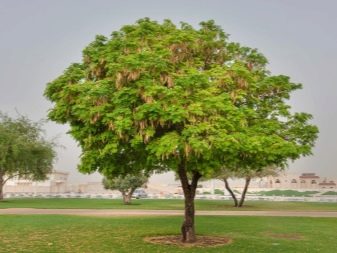
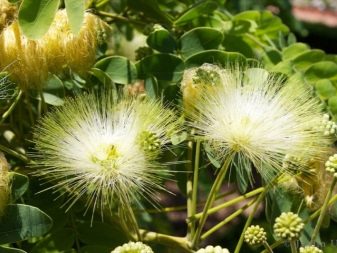
- Albizia calcor. The homeland of wild acacia is the mixed forests of the Middle Kingdom (China). It differs from Lankaran in less saturated color of inflorescences. This variety is very rare. On the territory of the Russian Federation, only two representatives are known: one tree grows in the Nikitsky Botanical Garden, the other lives in Sochi. Calcor blooms in mid-summer, the pods fall off and disperse from late autumn to spring.
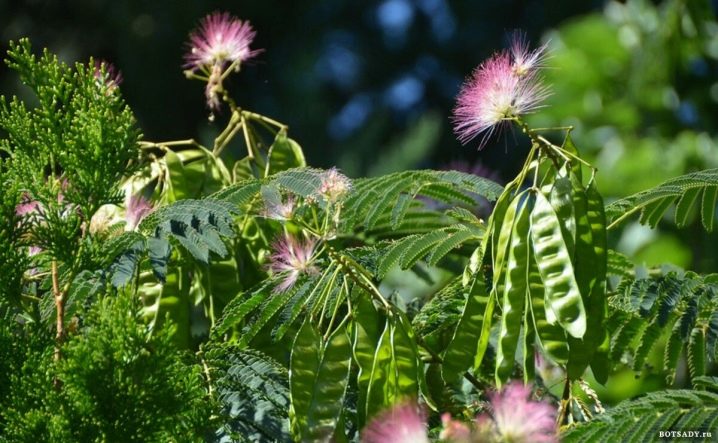
Due to the thermophilicity of the culture, landscape designers use albition only in the Crimea and in other southern regions with a subtropical climate, but even then gardeners are forced to deal with its climatic adaptation. The plant has to be gradually accustomed to winter temperatures.
Landing features
For the successful development of a plant in open ground, several agrotechnical conditions will be required. Albizia needs a high level of illumination, with mandatory protection from northerly winds and strong drafts. If there are no special requirements for the fertility of the land, then there are some for the composition - acacia does not tolerate acidic and heavy clay soils. The soil structure should be light, loose and breathable, with a neutral pH. Clay soils are structured using high-moor peat, river sand, perlite, vermiculite.
Soil composition for self-preparation:
-
1 part of sod land;
-
1 piece of leafy land;
-
¼ part of the total volume of peat and sand.
The optimal time for replanting seedlings to a permanent place is to warm up the soil to a temperature of 15-18ºC. If sowing is carried out with seeds, then the seed needs to be pre-soaked for 24 hours in hot water. Seeds, prepared and treated with stimulants, are buried into the soil by 3-4 cm. For seedlings, holes are dug with a size that is twice the volume of the root system. At the bottom, it is necessary to arrange a drainage layer of stony material of a fine fraction: crushed stone, pebbles, gravel. For indoor plants, ceramic pots are considered the most suitable.The pot should be small, since transplants and transfers will follow in the future.
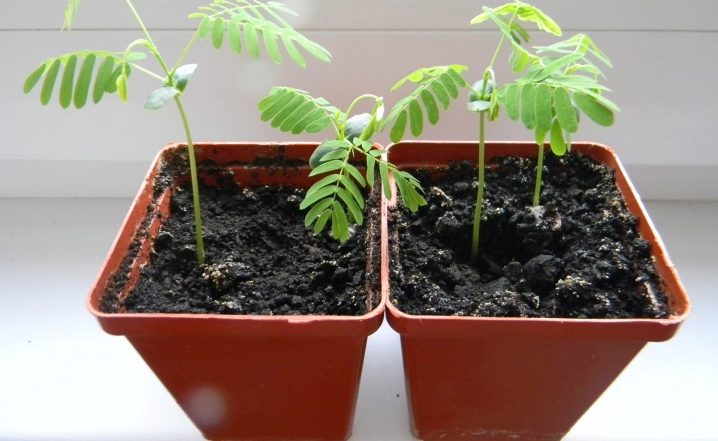
The nuances of care
The appearance of albitsia growing outdoors, as well as at home, largely depends on subsequent care. The most important procedures for growing from seed or seedlings are traditional agronomic practices.
Conditions
For albition growing in indoor conditions, you should find a location in the southern or southwestern part of the room. Constant exposure to ultraviolet light can kill the plant. Young plants should be shaded from bright rays, but adult plants do not tolerate long-term exposure to direct rays. Diffused light during most of the day is ideal. In case of a lack of light, artificial supplementary lighting with lamps of a cold white spectrum is used. For a garden location, large crowns of tall trees or areas inaccessible to direct sunlight are suitable. The optimum summer temperature is + 22-27ºC. Albizia also tolerates heat up to 33-35ºC, if it receives enough moisture, but does not react well to sudden changes.
In preparation for the state of winter dormancy, the temperature is reduced smoothly, no more than 1-2 degrees per day.
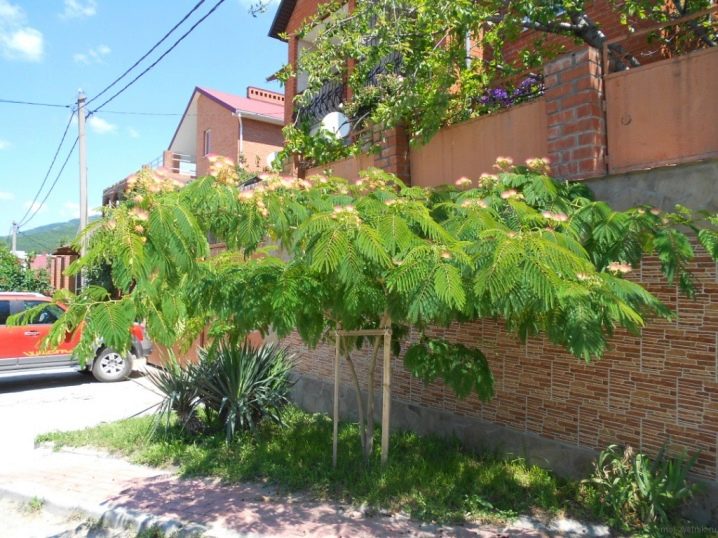
Top dressing
After planting, the plant will need additional nutrients in a year. The introduction of organic matter provides humus only or diluted organic compounds... Fresh manure and poultry droppings should not be used. It is easier to use ready-made complex mineral fertilizers. Top dressing is carried out once a year before the beginning of budding. In the case when a serious lag in the development of the plant is noticed, feeding can be repeated at the end of summer or at the beginning of autumn. Indoor specimens are fed monthly throughout the growing season.
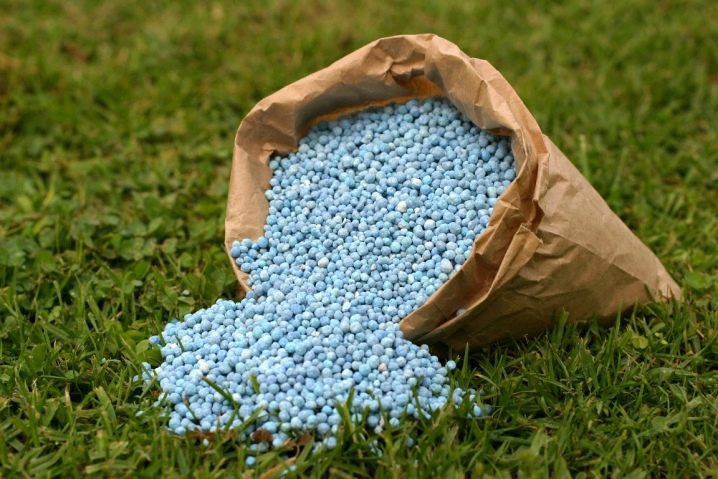
Transfer
Young plants grown in pots should be replanted annually, increasing the diameter of the container by 3 centimeters over the previous one. The container is subject to mandatory preliminary disinfection with a red solution of potassium permanganate. Fresh soil is used for transplanting, the event is planned for the end of winter or early spring. When transferring the earthen lump around the roots, you should carefully shake off, keeping the part of the earth hiding the roots, place the plant in a prepared container and fill the voids with fresh earth. This is followed by watering with settled water at room temperature.
Adult plants are not transplanted, they only renew the topsoil.

Wintering
For young plants, even the mild winter of the subtropics is a cause for great stress. To avoid their death you should carefully consider the preparatory activities. The trunk circles of garden specimens are mulched with a thick layer of peat, dead leaves or rotten sawdust. The crowns are wrapped in thin foam rubber, dense fabric or covered with cardboard. All watering is stopped until spring. Mature trees and shrubs can survive short-term temperature drops of -15ºC.
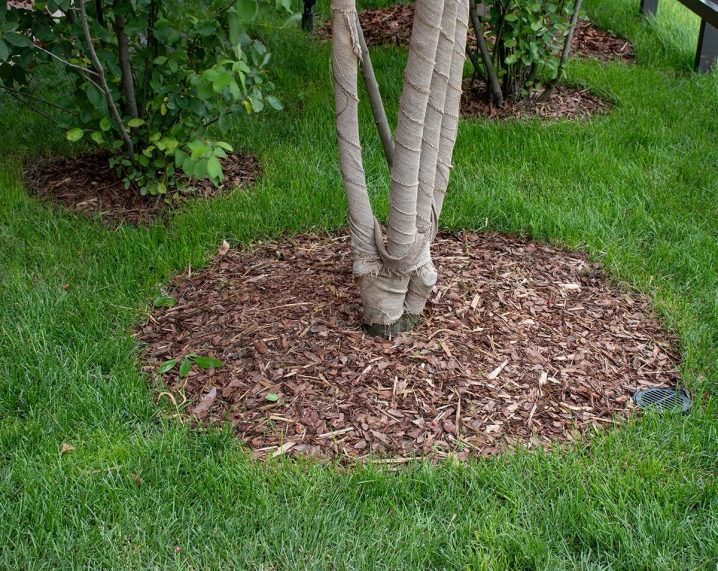
Reproduction
Albitsia reproduces vegetatively (cuttings), sowing with seeds and root shoots. The first method is the most practical, but requires the necessary knowledge and experience. The second option will take much more time, suitable for inexperienced gardeners or in the absence of other planting material. Sowing provides for mandatory stratification within 2 months. After that, the seeds are germinated in a permanent place in a mixture of sand and peat or in agroperlite. The first shoots appear in 1.5-2 months.
For cutting cuttings, the apical parts of one-year-old shoots with noticeable lignification are chosen. The length of each cutting is 10-15 cm, the lower cut is made at an angle of 45º, the upper edge should be at right angles. The sheet plate is shortened by ⅔. Before planting, the lower sections are powdered with Kornevin or soaked in its solution.Planting grows roots for 2-3 months. Plantings with cuttings are covered with agrofibre or film, regularly watered and aired.
Basal processes are simply separated from the maternal root and transplanted into a prepared hole.
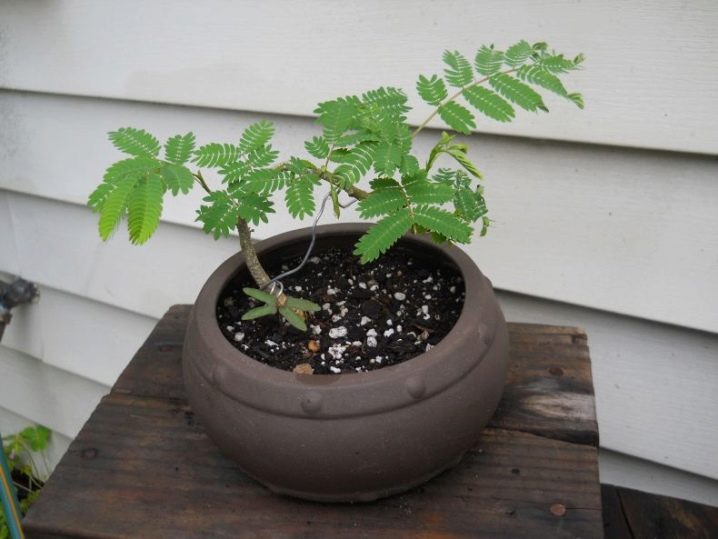
Diseases and pests
Acacia is distinguished by good health, as it has excellent immunity. A healthy garden plant is practically immune to pest attacks. Instances growing in greenhouses or at home can be affected by spider mites or scale insects, especially if succulents grow in the neighborhood. For prevention purposes, plants are treated with insecticides. The reason for the drying out in the spring of the annual growth of branches may lie in the fungal disease Coral Spot. In the fight against it, fungicides are used.
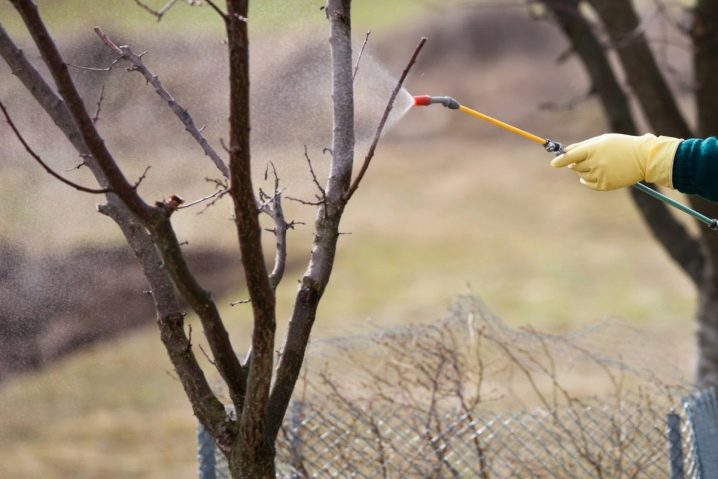



































































The comment was sent successfully.